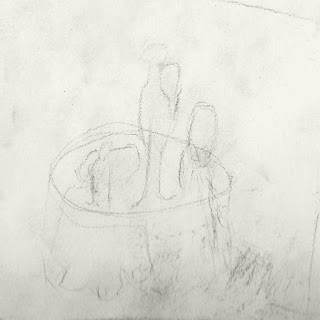below are studies of a sliver vase and drapery. these studies are of the textures of the vase and drapery.
from this first study we can see that 2 versions of each object, and each version has different techniques in how they are drawn.
this is the first attempt of the drapery. as you can see the image on the left doesn't have as much information as the right image. the left image does a some of the pattern of the drapery but not shading at all. the right image has much more detail you can see the patterns and how they overlap, looking at this image it looks as if the drapery is folded. some shading is evident around the image.
here we is a study of vases. both images have different techniques for its shading. the left image has some good shading the darker values represent the reflection in the vase and lighter values represent the sliver texture on the vase. the right image uses horizontal shading as to the vertical shading on the left image.
this drapery is more detailed as it has the drapery pattern, with the pattern on this drawing you can see how the drapery is folded up. the drawing does have some shading but it is incomplete and doesn't have much shading.
this is the final drawing of the composition. as you can see from this composition it has the vase and the drapery which was used for the studies. we can see from this drawing that the vase has the same shading technique as the study above. you can also see in this picture that the artist has tried to save the drawing as you can see the original sketch of the vases, as you can see the original sketch of the vase was to far to the left of the table and seem small compared to the table. whereas the finished vases are much more centred. the shading helps to define what areas of the vases, the darker values represent the reflections e.g of people and the lighter value is to represent the shine of the surface.


























